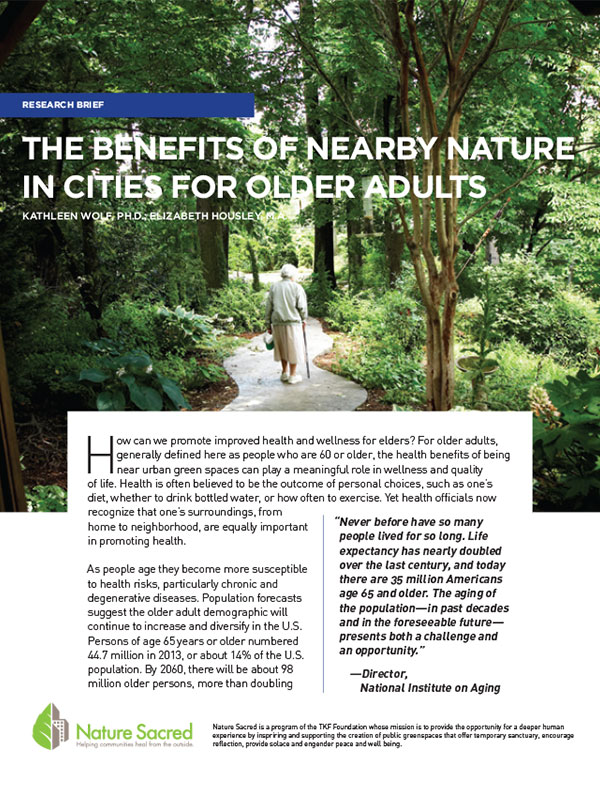Report
The Benefits of Nearby Nature in Cities for Older Adults
Publication Date:
How can we promote improved health and wellness for elders? For older adults, generally defined here as people who are 60 or older, the health benefits of being near urban green spaces can play a meaningful role in wellness and quality of life. Health is often believed to be the outcome of personal choices, such as one’s diet, whether to drink bottled water, or how often to exercise. Yet health officials now recognize that one’s surroundings, from home to neighborhood, are equally important in promoting health.
As people age they become more susceptible to health risks, particularly chronic and degenerative diseases. Population forecasts suggest the older adult demographic will continue to increase and diversify in the U.S. Persons of age 65 years or older numbered 44.7 million in 2013, or about 14% of the U.S. population. By 2060, there will be about 98 million older persons, more than doubling current numbers. In addition, more than eighty percent of the U.S. population now lives in cities and towns, and greater concentration in urban areas is projected.
The aesthetic value of parks, trees, and open space has been widely praised for centuries. In recent decades scientists have discovered a deeper level of impact. Studies have documented the connections between nature experiences and human health, wellness, function, and therapy. Evidence confirms that the experiences of city trees, parks, and gardens can aid with attention restoration and stress reduction, contribute to positive emotions, and can promote social engagement and social support (among neighbors, friends, family, and within local organizations). For older adults, such outcomes are important for urbanbased, healthy lifestyles.
This briefing is an overview of the health and wellness benefits of urban nearby nature, with special attention to the needs of people in their later years. There are general benefits from access to green spaces and neighborhoods. We also report on the specific health issues of aging, such as mobility, isolation, assisted living, physical therapy, depression and Alzheimer’s.
In this report the terms ‘nearby nature’ and ‘green space’ refer to urban landscapes, gardens, parks or any private or public green spaces that include natural elements (such as trees, small plants, water features, and even potted plants). Some green spaces may also provide opportunities for people to interact with companion animals, urban wildlife and other people.
